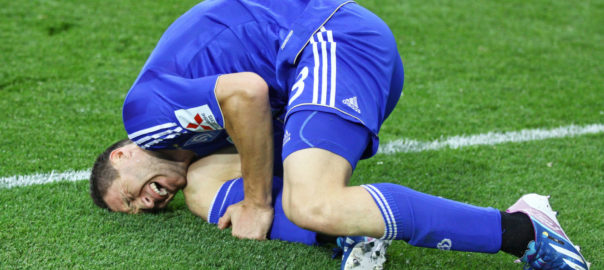Types of Regenerative Medicine for Sports Injuries

When injuries sustained during athletic activities do not respond to traditional treatments or surgery, your physician may recommend a regenerative medicine treatment. Regenerative medicine is a new branch of medicine that focuses on creating living tissues to reduce pain and restore tissue and organ function that would not heal itself naturally.
Regenerative medicine includes a variety of cutting-edge therapies, including:
-
Stem cell transplants
When bones, muscles, tendons, ligaments, or other tissues become damaged because of a sports-related injury, the body may have a difficult time producing cells to replace them. In a stem cell transplant, blood and tissue-forming stem cells are injected directly into the area of injury. It is theorized that the stem cells then differentiate into whatever type of cell the body needs to repair the injury. Incredible improvement in pain and function has been observed with stem cell transplants.
The stem cells used in transplants are usually harvested from the patient themselves, but can be acquired from donations through various methods such as umbilical cord blood. Bone marrow aspirate concentrate (BMAC), lipoaspirate, and micro fragmented adipose tissue (MFAT) are types of stem cell transplants.
-
PRP therapy
Platelet-rich plasma, or PRP, is made by processing a patient’s own blood in a centrifuge to create a substance that only contains platelets and plasma. The PRP is then injected directly into the injury site and the platelets send signals to the body to stimulate cell growth. Your body already uses platelets for healing processes, so why not give this natural body function a boost?
-
Prolotherapy
Inflammation can be painful and impair mobility, but it is a natural body process and happens for a reason; inflammation increases blood flow to the injured area. That blood brings cells with it that promote healing, such as granulocytes, monocytes, macrophages and fibroblasts. When inflammation subsides before an injury fully heals, fewer of these vital cells are brought to the injury site, causing healing to slow.
During prolotherapy, an irritant is injected into the injured area to cause inflammation. By producing inflammation, those healing cells will flood the area again to stimulate further healing.
-
Cartilage regeneration surgery
Cartilage regeneration involves performing surgery on injured or damaged cartilage, which does not have its own blood supply and typically does not heal well naturally. Since the causes of cartilage damage vary, the surgical techniques used to repair cartilage are also diverse.
If you are looking for regenerative medical therapy to help heal your sports-related injury, use our free search function at www.regenerativemedicinenow.com to locate nearby practitioners and clinics. If you provide regenerative therapy and treatments for athletic injuries, claim your free profile on our site to connect with patients searching for your services.


